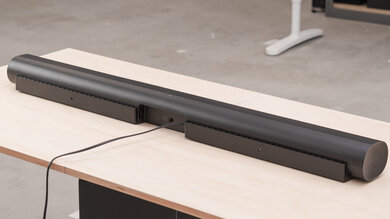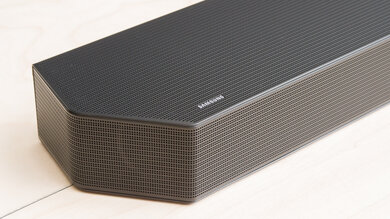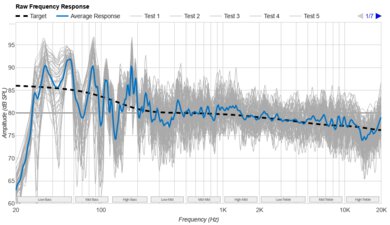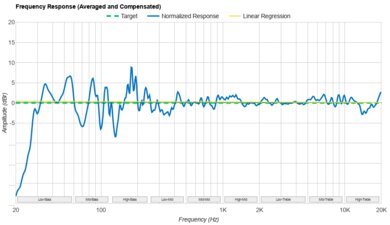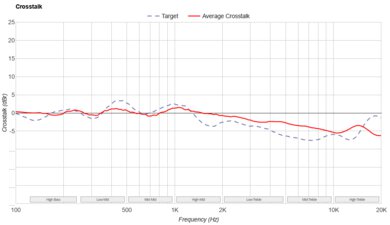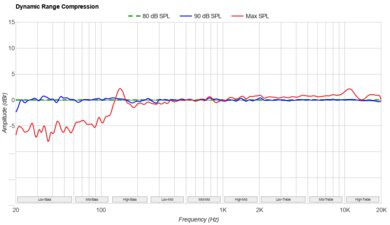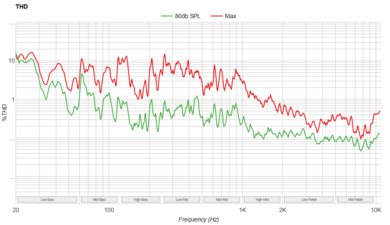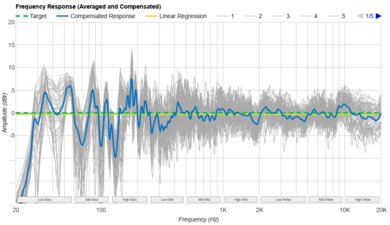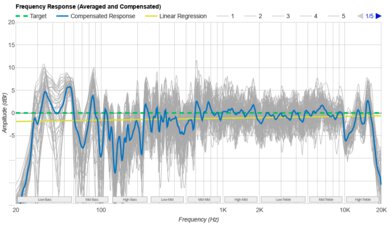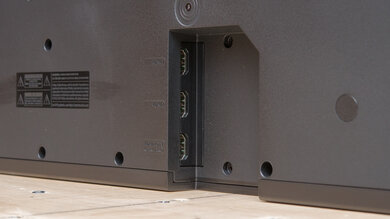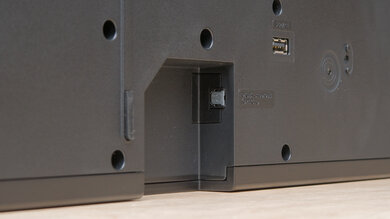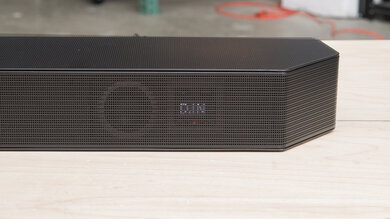The Roku Smart Soundbar is an entry-level 2.0 soundbar. It gives you access to Roku's streaming media player, which organizes your streaming platforms like Netflix, Hulu, and Disney+ into one place and even lets you display HDR10 via these apps. This bar performs well with dialogue-heavy content like podcasts and TV shows, thanks to its fairly neutral and well-balanced mid-range. You can also use the bar to play surround content, though it doesn't provide the most immersive listening experience. It doesn't support Atmos content and it doesn't have an HDMI In port. There's no interface on the bar, so you'll need to connect it to your TV or download the companion app to adjust its settings, view its volume level, or access the Roku media player. Overall, it's still a decent entry-level soundbar that can enhance your TV-watching experience.
Our Verdict
The Roku Smart Soundbar is adequate for mixed usage. Overall, it has a decently neutral audio reproduction, especially in the mid and treble ranges, meaning it can reproduce voices and lead instruments well. It doesn't have a subwoofer and struggles to reproduce the deep thumps and rumbles of low bass. On the upside, it has some sound customization features, including four EQ presets, a dialogue enhancement feature, and an auto volume setting. However, like many 2.0 soundbars, it doesn't support Atmos, and its surround performance is poor.
- Gets loud.
- Adjustable dialogue enhancement feature.
- Voice assistant capabilities.
- Doesn't support Atmos content.
- Lacking sub-bass.
- No dedicated subwoofer.
The Roku Smart Soundbar is decent for dialogue-heavy TV shows and podcasts. This bar is a 2.0 setup, so it doesn't have a dedicated center channel, but it still does a good job reproducing dialogue clearly. Its audio reproduction is fairly neutral and well-balanced in the mid-range, which is ideal for reproducing voices. There's also an adjustable dialogue enhancement feature to help make dialogue sound more crisp and clear. You can also wirelessly connect your mobile devices to stream content to the bar using Bluetooth or Wi-Fi.
- Gets loud.
- No dedicated center channel.
The Roku Smart Soundbar is okay for music. Its sound profile is pretty neutral and well-balanced, especially in the mid and treble ranges, which is ideal for reproducing vocals and lead instruments. However, this setup doesn't come with a subwoofer, so it's lacking a bit of sub-bass. It's disappointing if you love bass-heavy genres like EDM and hip-hop. The bar has some sound customization features, including four different EQ presets that help you adjust the sound to your liking. You can also purchase a sub separately to improve its bass reproduction.
- Gets loud.
- Four EQ presets.
- Well-balanced mid-range.
- Lacking sub-bass.
- No dedicated subwoofer.
- No graphic EQ.
The Roku Smart Soundbar is disappointing for movies. While its sound profile is pretty well-balanced and reproduces voices well, it's lacking sub-bass, meaning you won't get the deep thumps and rumbles from explosions in action-packed scenes. This soundbar supports surround content, but like most 2.0 soundbars, it downmixes it to stereo, so it doesn't have the most immersive listening experience. It also doesn't have height channels and can't support Dolby Atmos content.
- Gets loud.
- Doesn't support Atmos content.
- Poor surround performance.
- Lacking sub-bass.
Changelog
- Updated Aug 11, 2022: Added information to 'Remote' box to compare with Roku Streambar Pro.
- Updated Aug 10, 2022: Updated bar to firmware version 11.0.0. Added bass and treble adjustments to 'Sound Enhancement Features' box. Added information to 'Stereo Frequency Response with Calibration'. Updated overall usage scores accordingly.
- Updated Mar 30, 2021: Converted to Test Bench 1.0.
- Updated Jan 13, 2021: Due to a change in our methodology, we updated DTS and DD+ support via ARC to 'No'.
Check Price
Popular Soundbar Comparisons
The Roku Smart Soundbar is a 2019 entry-level 2.0 setup. It can play surround content, and it has some sound enhancement features. You can use the bar to access Roku's media streamer, which puts all of your streaming services such as Netflix, Disney+, and Hulu in one place. There's also a mic built-in to the remote, so you can use voice assistants to control the bar. It doesn't come with a subwoofer or rear speakers, though you can purchase these separately.
If you're looking for more soundbars, see our recommendations for the best budget soundbars, the best soundbars under $200, and the best soundbars.
The Roku Streambar Pro is the next generation of the Roku Smart Soundbar. That said, there isn't much of a difference between these bars when it comes to design and sound quality. Instead, the Pro offers a newly-designed remote with a headphone jack so you can enjoy private listening from your TV. Also, its two programmable controls make it easy to access your favorite voice controls with a button press.
The Roku Smart Soundbar is a better 2.0 soundbar than the Roku Streambar. These two soundbars have the same physical inputs and sound enhancement features. However, the Smart Soundbar has a significantly better-balanced sound profile and its surround performance is much better, too. It can also get louder, although there are more compression artifacts than the Streambar. However, the Streambar has a better center channel performance.
The 5.0.2 Sonos Arc is a better soundbar for TV shows and movies than the 2.0 Roku Smart Soundbar. Unlike the Roku, the Sonos has a dedicated center channel, which allows it to reproduce voices and dialogue clearly and more accurately. It doesn't downmix surround content into stereo, which provides a more immersive listening experience. Unlike the Roku, the Sonos also supports Atmos content and has a room correction feature and a wider and more focused soundstage.
The Roku Smart Soundbar and the TCL Alto 5 are very similar 2.0 setups. Depending on your listening habits, you may prefer one over the other. The TCL has a better build quality. Neither bar comes with a subwoofer, and neither bar can play Dolby Atmos content. However, the Roku has a companion app and an auto volume feature, which is good if you want to control the volume level between different programs and commercials.
Test Results




